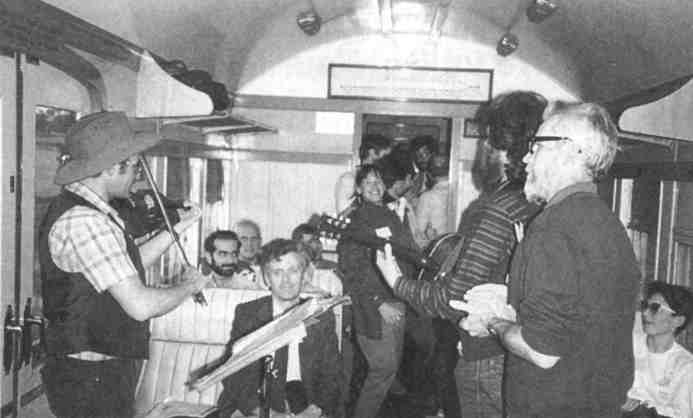


Meeting report
Australian Crystallographers in the Blue Mountains

The Hydro Majestic Hotel, with its magnificent views of the Blue Mountains, and excellent conference room, provided an outstanding setting for Crystal XVIII, April 5-8, 1994. The program covered the fields of protein crystallography, materials science, crystal physics, instrumentation, and theoretical developments. J. Helliwell, the 1987 Fellow, presented the Conference Lecture on the application of synchrotron radiation to biological structures. He gave an excellent overview of new developments in data collection methods at synchrotron facilities, with special emphasis on the use of Laue methods for data collections from protein crystals. Another highlight of the conference was the after-dinner presentation by S. Mathieson on aspects of the early history of crystallography in Australia. There were 110 participants, 25 students among them, at Crystal XVIII contributing 36 lectures and 41 posters.
 "Trained" crystallographers on the excursion to York atthe XIV Congress in Perth, Australia, August 1987. Included: Bob Gould, Suzanne Fortier, Frank Allen, and Ted Maslen. (Photo WLD)
"Trained" crystallographers on the excursion to York atthe XIV Congress in Perth, Australia, August 1987. Included: Bob Gould, Suzanne Fortier, Frank Allen, and Ted Maslen. (Photo WLD)
Following the SCA meeting, a workshop on Powder Diffraction was held at the Redleaf Motel, Blackheath. The emphasis of the workshop was on developments at the Australian National Beam Line Facility (ANBF), at the Photon Factory, Tsukuba, and in the performance of Big Diff, the Australian designed and constructed powder diffractometer. H. Hashizume gave an overview of the synchrotron facility at Tsukuba and the ANBF. R. Garrett gave further details on the setting up of the ANBF and the commissioning of the Big Diff. A. Stevenson, R. Hill, and T. Sabine had "hot off the press" results from the Big Diff to report. The general prognosis was that the instrument is performing extremely well in relation to resolution, diversity of experiments that can be performed, and the effectiveness of the image plates for data collection. D. Creagh and S. Wilkins mentioned new developments in the pipeline which include a Sagittal focusing monochromator for wavelength selection, a second condensing channel cut monochromator to further improve resolution at high angles, and an analyzer crystal to replace the diffracted beam slits. A flat specimen holder is now awaiting installation as an alternative to capillaries.
Ian Grey


